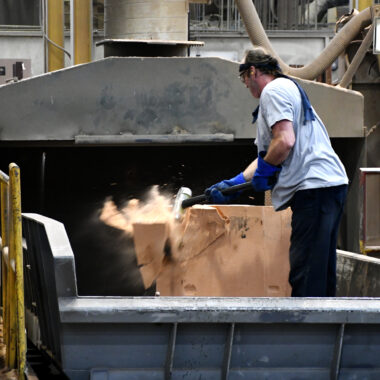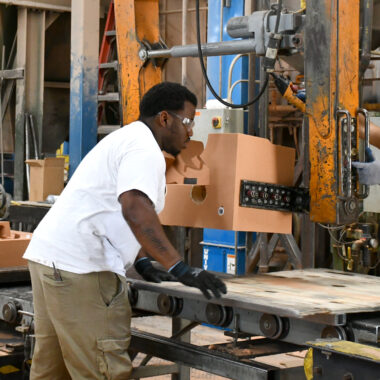Opening Excellence: Aluminum Casting Techniques & Tips for Superior Outcomes
Opening Excellence: Aluminum Casting Techniques & Tips for Superior Outcomes
Blog Article
Unveiling the Various Kinds of Aluminum Casting Processes for Accuracy Outcomes
From die spreading to sand casting, investment casting, long-term mold and mildew spreading, and centrifugal casting, each method brings its own set of benefits and intricacies to the table. By discovering the distinctive characteristics of each casting approach, a much deeper insight into the world of aluminum casting can be acquired, dropping light on the ideal approach for achieving accuracy results in numerous applications.
Die Casting Process
The Die Casting Process is a very efficient manufacturing method for producing geometrically intricate metal parts with high precision and repeatability. This process involves forcing molten steel right into a steel mold and mildew dental caries under high stress. The mold and mildew, likewise referred to as a die, is commonly made in two parts: the cover die half and the ejector die fifty percent. These passes away are developed to create the wanted shape of the end product.
Among the crucial advantages of die spreading is its capability to produce get rid of slim walls, intricate information, and smooth surfaces. This makes it a favored option for industries such as auto, aerospace, and electronic devices where complex steel elements are needed. Furthermore, die casting offers excellent dimensional precision, permitting minimal post-processing demands.
Additionally, pass away casting can be categorized right into hot chamber and cool chamber pass away casting procedures. In warm chamber die spreading, the molten steel is included in a heater while in cold chamber pass away casting, the liquified metal is ladled into the cool chamber for every shot. aluminum casting. Each method has its very own set of advantages and is picked based on the details demands of the task
Sand Spreading Technique
Utilizing a centuries-old method, the sand spreading method is a commonly made use of process in the production sector for creating metal parts. This method includes developing a mold and mildew made of compressed sand right into which liquified steel is put, enabling it to strengthen and take the form of the mold and mildew cavity. Sand spreading is valued for its versatility, as it can generate a vast array of intricate sizes and shapes, making it ideal for various industries such as automotive, aerospace, and art factories.
One of the vital benefits of sand casting is its cost-effectiveness, particularly for reduced to medium quantity manufacturing runs. In addition, the sand mold and mildews can be reused numerous times, decreasing material waste and total production costs. Despite its long history, contemporary advancements in sand casting techniques, such as using computer simulations for mold and mildew design and 3D printing for creating intricate patterns, have even more boosted the accuracy and efficiency of the process. In general, the sand casting technique continues to be a preferred selection for manufacturers looking for a cost-effective and reputable method to create top notch steel parts.
Investment Casting Technique

This strategy is preferred for its ability to generate complex forms with high precision and great surface area look at this site finishes. Industries such as aerospace, auto, and precious jewelry count on investment spreading for parts that call for tight tolerances and intricate information. The process allows for cost-effective manufacturing of little to medium-sized components in different materials, making it a functional option for makers seeking accuracy results.
Permanent Mold And Mildew Casting
With an emphasis on producing steel elements via a recyclable mold and mildew, Long-term Mold and mildew Casting supplies an alternative strategy to the elaborate accuracy of investment spreading. aluminum casting. This method, additionally known as gravity pass away spreading, involves the usage of an irreversible metallic mold and mildew usually made from steel or actors iron. The mold is preheated prior to the liquified steel is poured into it, permitting for faster solidification compared to sand casting
Permanent Mold Casting makes click here now it possible for the manufacturing of high-quality, dimensionally exact parts with a fine surface coating. By making use of a recyclable mold and mildew, producers can accomplish price financial savings in time as the mold can be utilized numerous times without considerable deterioration. This procedure is excellent for high-volume production runs where consistency and effectiveness are vital.
Among the key advantages of Long-term Mold Casting is its capability to create intricate forms and elaborate designs with ease. aluminum casting. The technique is commonly used in the vehicle, aerospace, and electronic devices markets for making components such as engine parts, heat sinks, and structural elements

Centrifugal Spreading Approach
The Centrifugal Spreading Method is an approach that includes rotating a mold at broadband while pouring liquified steel into it. This procedure utilizes centrifugal pressure to disperse the molten steel evenly along the wall surfaces of the mold, causing a top notch, dense casting. The centrifugal pressure presses pollutants and gases towards the internal size of the casting, causing a cleaner end product with boosted mechanical homes.
One of the essential advantages of centrifugal spreading is the ability to create disk-shaped or round components with a fine-grained structure that improves the mechanical properties of the casting. This method is especially ideal for creating in proportion components such as pipelines, tubes, and rings. In addition, centrifugal spreading offers the advantage of being an economical procedure with reasonably low tooling prices contrasted to various other casting approaches.
Conclusion
In final thought, comprehending the different sorts of light weight aluminum spreading procedures is critical for attaining precise lead to manufacturing. Each technique has its own advantages and constraints, making it essential to choose one of the most appropriate procedure based on the certain requirements of the job. Whether it is pass away casting, sand casting, investment casting, Homepage permanent mold and mildew spreading, or centrifugal casting, picking the right strategy can bring about premium and economical production results.
From die casting to sand spreading, financial investment casting, permanent mold spreading, and centrifugal casting, each method brings its very own collection of advantages and complexities to the table. By discovering the unique qualities of each casting approach, a much deeper insight right into the globe of aluminum spreading can be gained, losing light on the ideal technique for achieving accuracy outcomes in numerous applications.
In hot chamber pass away casting, the molten steel is included in a heater while in chilly chamber die spreading, the molten metal is ladled right into the cold chamber for each shot.With a focus on developing steel components via a multiple-use mold and mildew, Permanent Mold and mildew Casting supplies an alternate method to the detailed precision of financial investment casting. Whether it is die spreading, sand casting, investment casting, irreversible mold spreading, or centrifugal casting, picking the best strategy can lead to economical and top quality manufacturing outcomes.
Report this page